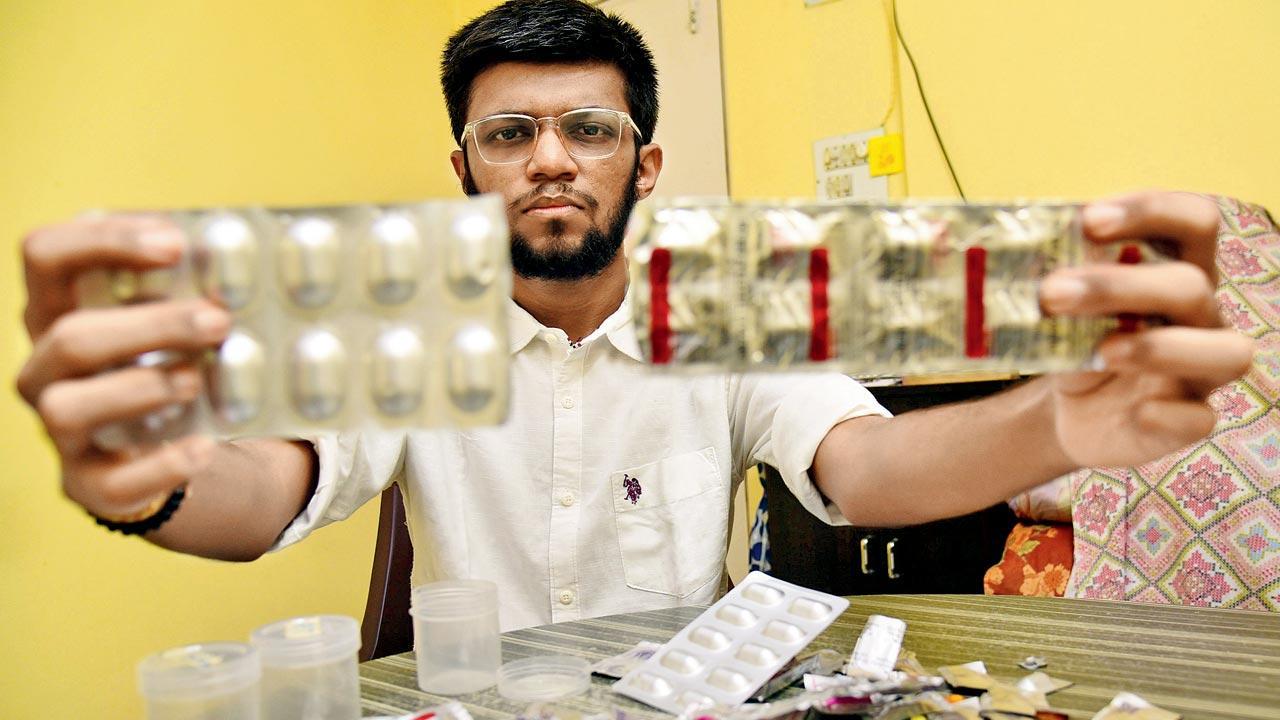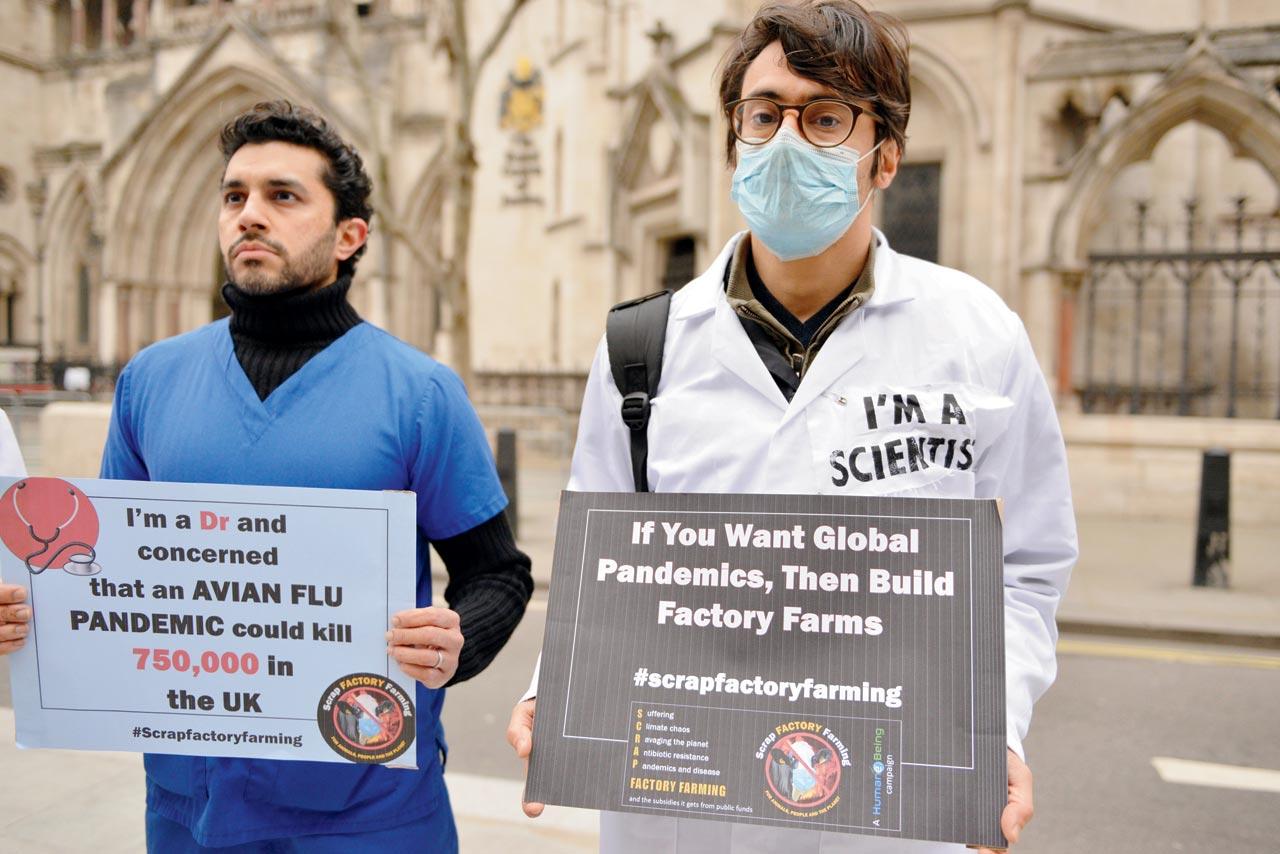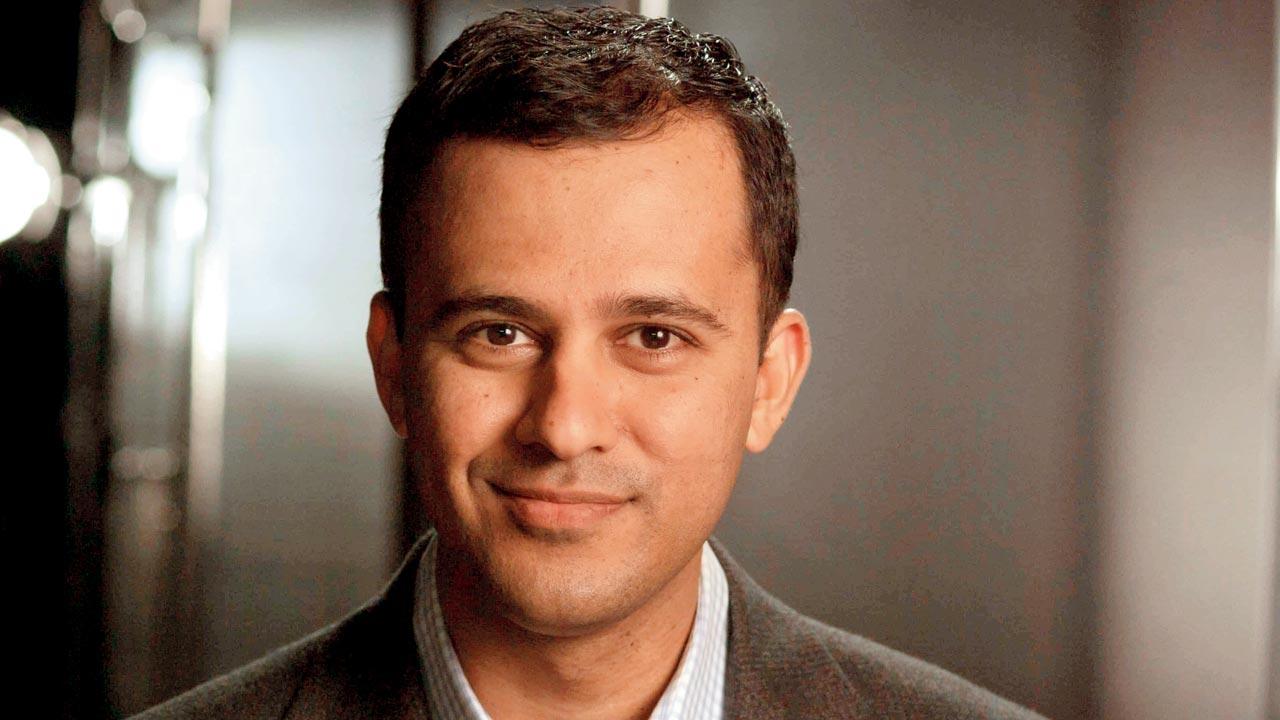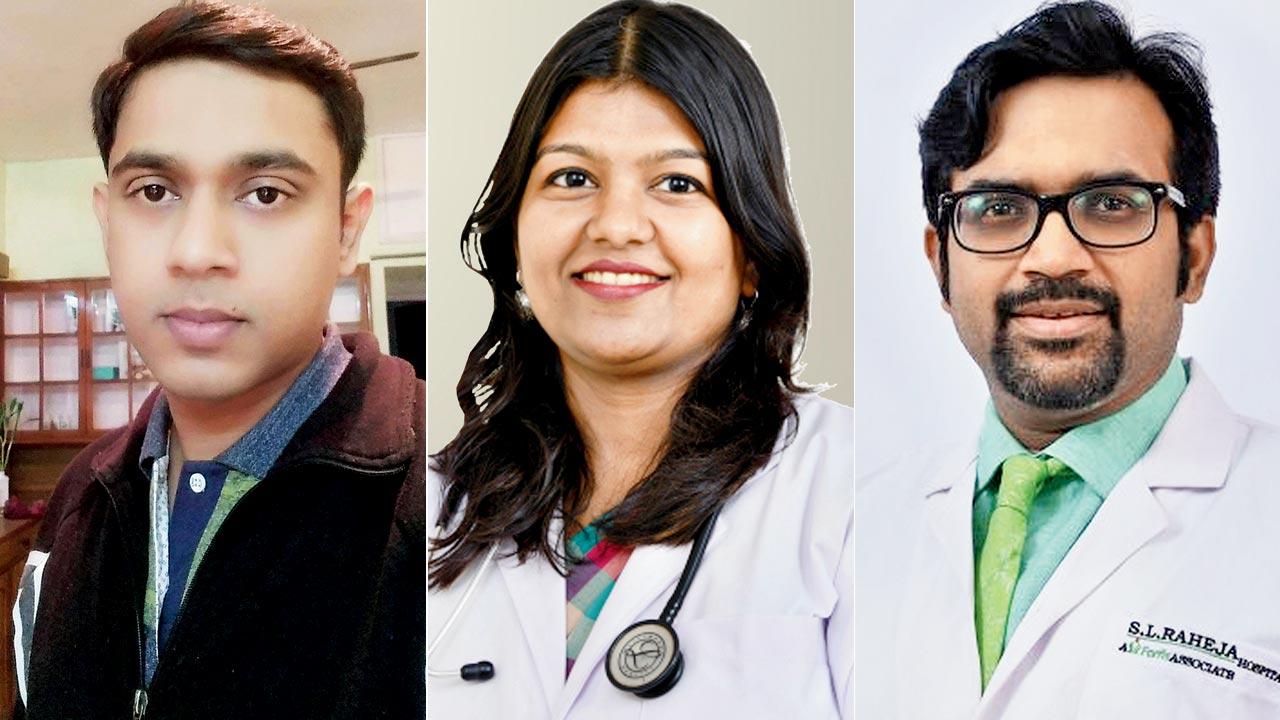Health staff are trying to wrap their heads around the growing resistance to antibiotics, which ICMR says has the potential of taking the form of a pandemic very soon

Dahisar-resident Kunal Thakkar was diagnosed with pre-extensively drug-resistant tuberculosis last year, for which he consumes antibiotics of very high generation. He says he developed mental health complications due to this. Pic/Nimesh Dave
Just a week shy of turning 25, Dahisar resident Kunal Thakkar tells us he has been given a second shot at life. The photographer-turned-bookstgrammer spent a better part of the last two years indoors after a wrong diagnosis turned life on its head. Since 2018, Thakkar was under treatment for asthma, taking medicines twice a day, only stopping them briefly during the pandemic. “At the fag end of 2020, I started feeling breathless in the night, and while my doctor continued my asthma medication, my father noticed that I was also losing weight drastically. We thought it was because of my loss of appetite. But, when it dropped from 70 kg in December 2020 to 60 the following month, dad was alarmed.”
ADVERTISEMENT
Around this time, Thakkar also developed a fever, and despite negative Rapid Antigen and RT-PCR tests, was advised to isolate at a COVID isolation centre by his doctor. “While I was there, the health staff ran a few tests to figure out why my fever wasn’t breaking. In one of those tests, I was diagnosed with tuberculosis (TB).”

Activists and medical health professionals hold placards warning of the dangers of antibiotic resistance at a protest in London earlier this year. Pic/Getty Images
The family was partly relieved, because “at least now we weren’t being misguided… we knew what the real problem was”. But his weight loss continued to be a cause for concern. “I was losing a kilo every day,” he remembers. Another battery of tests followed, after which Thakkar was diagnosed with pre-extensively drug-resistant tuberculosis (XDR-TB). According to the World Health Organisation’s updated definition, “pre-XDR-TB is caused by Mycobacterium tuberculosis [M. tuberculosis] strain that fulfil the definition of multidrug resistant and rifampicin-resistant TB (MDR/RR-TB) and which are also resistant to fluoroquinolone.”
That’s when, Thakkar says, his world fell apart. “About 14 drugs can cure TB, and I am resistant to eight of them,” he says. “Most of these aren’t easily available in
the market, and the side effects are terrible.”
 Dr Ramanan Laxminarayan, founder and director of One Health Trust
Dr Ramanan Laxminarayan, founder and director of One Health Trust
For the first six months, he consumed nearly 30 tablets a day; and while the tablets have reduced since, Thakkar, who didn’t have a history of mental illness, has been diagnosed with OCD, depression, and anxiety. “All of this was taking a huge toll on my mind,” he says. “I started having fearful thoughts… once, I ate a chocolate, and thought it was stuck in my throat and would kill me. I even had a test done [to rule it out].”
Thakkar is among the growing tribe of people in India and the world, who are showing antimicrobial resistance (AMR). Antimicrobials, which include antibiotics, antivirals, anti-fungals and anti-parasitics, are medicines used to prevent and treat infections in humans, animals, and plants. With drug-resistance spreading, the ineffectiveness of antimicrobials, WHO shared is “making infections harder to treat and increasing the risk of disease spread, severe illness and death… It’s a major threat to public health.” A study published in The Lancet estimates that in 2019, 4.95 million people died from illnesses in which bacterial AMR played a part. “Of those, 1.27 million deaths were the direct result of AMR.”
 Dr Giridara Gopal Parameswaran, Dr Kirti Sabnis and Dr Sanjith Saseedharan
Dr Giridara Gopal Parameswaran, Dr Kirti Sabnis and Dr Sanjith Saseedharan
Similar concerns were raised by the Indian Council of Medical Research (ICMR) in its fifth detailed report on AMR last week. The data analysis, which was done between January 1 and December 31, 2021, found that a big chunk of patients “in India may no longer benefit from carbapenem, a powerful antibiotic administered mainly in ICU settings to treat pneumonia and septicemia, as they have developed antimicrobial resistance to it”. According to the ICMR report, “resistance to Imipenem, used to treat infections caused by bacteria E. coli, has increased from 14 per cent in 2016 to 36 per cent in 2021… The trend of decreasing susceptibility of bacteria to specific antibiotics was also observed with Klebsiella pneumoniae as it came down from 65 per cent in 2016 to 45 per cent in 2020 and 43 per cent in 2021.”
In an email interview, Dr Ramanan Laxminarayan, founder and director of One Health Trust in Washington and Bengaluru that researches major global health challenges, called the ICMR report commendable and stressed the need for urgent intervention. “India has among the highest rates of antibiotic resistance in the world—a combination of a large number of infections and high proportion of these infections being multi-drug resistant. We proceed down this path of unmitigated use of antibiotics at our peril and are essentially creating the next pandemic.”
Epidemiologist Dr Giridara Gopal Parameswaran says among the antimicrobials, antibiotics—available over the counter at pharmacies—are most commonly used, irrespective of whether it’s a viral flu or a fungal infection.
Dr Kirti Sabnis, Infectious Disease Specialist at Fortis Hospital in Kalyan and Mulund, discusses the “use and abuse”. “Take common cold, for instance, which is a viral syndrome. Patients use antibiotics to treat it, because they are easily available,” she says. Antibiotics, she adds, are solely to be used to treat certain bacterial infections. “If you give an unnecessary prescription for an antibiotic in an environment where the body doesn’t require it,” Parameswaran says, “it’s likely that the body may not respond effectively to it when the actual organism [enters the body and requires the same antibiotic to treat it].”
There are many theories as to why this happens, one of which is that each time we take an antibiotic, we allow the few superbugs (bacteria that are able to survive the antibiotic) to thrive. Then there’s the issue of people not completing the full course of treatment. “You can’t just stop when you feel better; you need to complete the course as prescribed by the doctor. If you don’t, it can impact resistance,” says Sabnis. According to Laxminarayan, the COVID-19 pandemic has increased the inappropriate use of antibiotics. “Poor treatment guidelines [for COVID-19] and lack of compliance has resulted in a massive increase in the use of broad spectrum antibiotics that have generated resistance.”
The bigger challenge now is to stop AMR’s transfer within the food chain. “In humans, AMR is a result of poor prescription practices,” says Parameswaran, adding, “In the food industry too, antibiotics use is rampant and unregulated. In poultry farms, for instance, chicken are fed antibiotics and develop AMR. This meat is consumed by us, and that’s how we become resistant to antimicrobials. Fish, meat and milk can all be carriers.” AMR is also found in the environment, he says. “Untreated effluents/byproducts from pharmaceutical industries manufacturing antibiotics can enter our food chain if they are disposed of in a river or into open land.”
In 2015, Dr Sanjith Saseedharan, presently consultant and Head of Critical Care at SL Raheja Hospital in Mahim, conducted a month-long pilot in the ICU of a tertiary care hospital in Mumbai. As part of the study, faecal samples of patients admitted directly to the ICU were analysed; these patients weren’t admitted for infections. The results showed high faecal carriage of carbapenem-resistant Enterobacteriaceae in critical care patients, indicating “possible spreading of these resistant bacteria strains in ICUs”. “This means our groundwater is also infected,” Saseedharan tells mid-day. “AMR is one of the biggest challenges in intensive care. In fact, for hospital-based environments, it’s so difficult to treat patients with simple antibiotics now. At least one in two persons, who is admitted, has AMR. Sometimes, even a small wound on the knee needs antibiotics that are of very high generation [antibiotics are subdivided into generations—1st to 5th—in accordance to their target organism]. Higher the generation, higher the toxicity, and greater the problems. So, if the length of a patient’s stay in the hospital would have been five days, it’s now extended to 15 days. Even with the advent of extremely high-tech equipment to diagnose bacteria, if we don’t have drugs to fight them, what’s the point?”
Recently, a 75-year-old patent underwent bypass surgery. “When the patient went home,” says Saseedharan, “an infection [sternal wound] developed wherever he had stitches. It was extremely difficult to treat because of his resistance pattern. It’s been three months now.”
Speaking with mid-day, the patient’s son says the oral antibiotics prescribed to his father didn’t suit him. The family was forced to re-admit him nearly one-and-a-half months after the surgery. “The doctors did a bacteria culture test [to identify whether it was a bacterial infection] and put him on new medication [an antibiotic that contains ciprofloxacin]. In the process, he lost a lot of muscle mass. The healing is very slow,” says the son.
In 2017, the Government of India formulated a National Action Plan to tackle AMR (NAP-AMR). While the NAP-AMR mirrors the Global Action Plan, Laxminarayan says the plan, “has largely been only in name”. “Except for a few consequential measures, such as removal of irrational antibiotic combinations from the market, I don’t see the seriousness of effort that would make a meaningful difference to resistance,” he adds. “The culprit is not one sector,” Parameswaran adds. “We need equal focus and execution in all the domains [agriculture, environment, poultry]. We need triangulation of data from all these sources and they must speak together effectively to mitigate AMR.”
A report, titled Drug Regulatory Approvals and Opportunities for Antimicrobial Innovation, released in July by researchers of One Health Trust stated that “lack of investment in antibiotic R&D explains the failing clinical and preclinical antibiotic pipelines: antibiotics are costly to produce, and their low prices and restricted use do not make their development economical”.
Parameswaran admits this is a challenge. “While many countries, including India, are known for pharma industries, many are not investing in development of newer antibiotics. The problem is that while many antibiotics are available globally today, people have developed resistance to most of them. These antibiotics can be potentially useful for another three to five years only. We will need to develop more of them, and soon.”
4.95 million
No. of people estimated to have died from illnesses in which bacterial AMR played a part, according to a 2019 Lancet study
1.27mn
No. of deaths that were a direct result of AMR, according to a study published in 2019
 Subscribe today by clicking the link and stay updated with the latest news!" Click here!
Subscribe today by clicking the link and stay updated with the latest news!" Click here!







